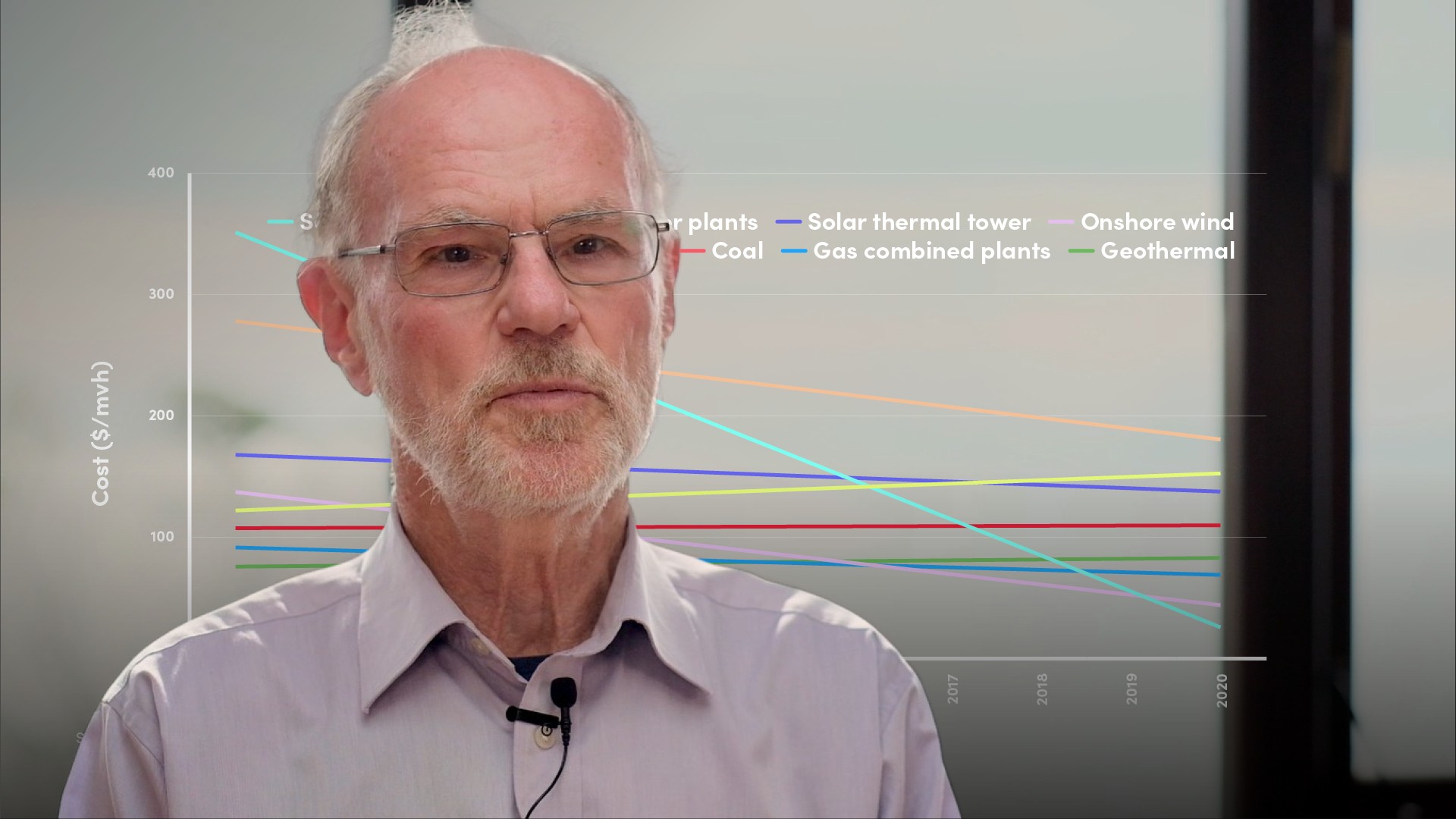
Introduction to Energy Storage Technology

Colin Palmer
40 years: Renewable energy
Key to the generation of high proportions of power from inherently variable renewable energy sources is the use of energy storage. Storage is necessary to both smooth out short term mismatches between supply and demand and to balance longer-term, inter-seasonal differences. In this video, Colin describes the present and future energy storage technologies including how new manufacturing models are being used for batteries and solar panels.
Key to the generation of high proportions of power from inherently variable renewable energy sources is the use of energy storage. Storage is necessary to both smooth out short term mismatches between supply and demand and to balance longer-term, inter-seasonal differences. In this video, Colin describes the present and future energy storage technologies including how new manufacturing models are being used for batteries and solar panels.
Subscribe to watch
Access this and all of the content on our platform by signing up for a 7-day free trial.

Introduction to Energy Storage Technology
10 mins 53 secs
Key learning objectives:
Describe the present and future energy storage technologies
Describe how new manufacturing models are being used for batteries and solar panels
Explain the significance of bi-directional connection of electric vehicles
Overview:
A key to the generation of high proportions of power from inherently variable renewable energy sources is the use of energy storage, to both smooth out short term mis-matches between supply and demand and to balance longer term, inter-seasonal differences.
Subscribe to watch
Access this and all of the content on our platform by signing up for a 7-day free trial.
What are the Existing and developing energy storage technologies?
For short term storage, lithium-ion batteries are the dominant technology. They have the highest energy density and are capable of long lifetimes with high levels of discharge and ability to accept fast charging. Their development has been, and will continue to be driven by the EV industry. Related battery chemistries are under active development (such as sodium-ion, solid-state and aluminium-air), which may come to challenge or complement lithium-ion at some point. For many mobility applications, energy density is very important, but for stationary applications, and perhaps low speed transport such as shipping, it is less so. These different priorities are likely to drive a future divergence in battery types.
The most promising energy carrier for longer terms storage is hydrogen, either in its native form or chemically combined in a gas such as ammonia.
Other storage technologies such as flywheels, compressed air and gravity systems are under development and may come to occupy niches in the storage ecosystem needed for a smart gird.
What is a “Gigafactory”?
A “Gigafactory” is a term coined by Tesla’s Elon Musk in 2013 and refers to new-build, huge, highly automated, energy efficient factories dedicated to the manufacture of batteries or solar panels. The prefix “giga” is a reference to units such as gigawatts - giga denoting one billion. Gigafactories are at the heart of the mass production processes that are continually driving down the costs of batteries and solar panels. The first one was built in the USA by Tesla, but the concept is now spreading across the globe.
Electric vehicles and the stability of electrical girds
EVs are batteries on wheels, and like most vehicles, will be stationary for a high proportion of their lives. If they are connected to the electricity network with bi-directional connections, they can not only take power when needed for charging, but can also feed it back at times when the grid is under stress. This is achieved automatically with intelligent systems, ensuring no inconvenience to the EV user, whilst providing a source of distributed storage that supports the network and provides income for the owner, so incentivising this service.
Subscribe to watch
Access this and all of the content on our platform by signing up for a 7-day free trial.

Colin Palmer
There are no available Videos from "Colin Palmer"



























